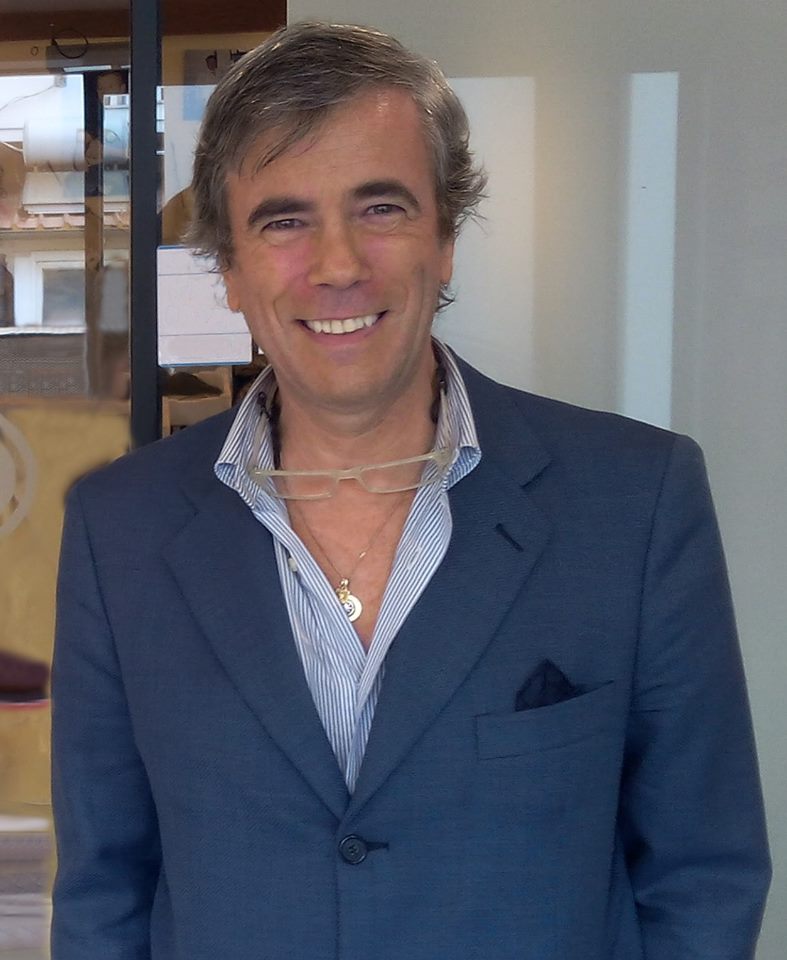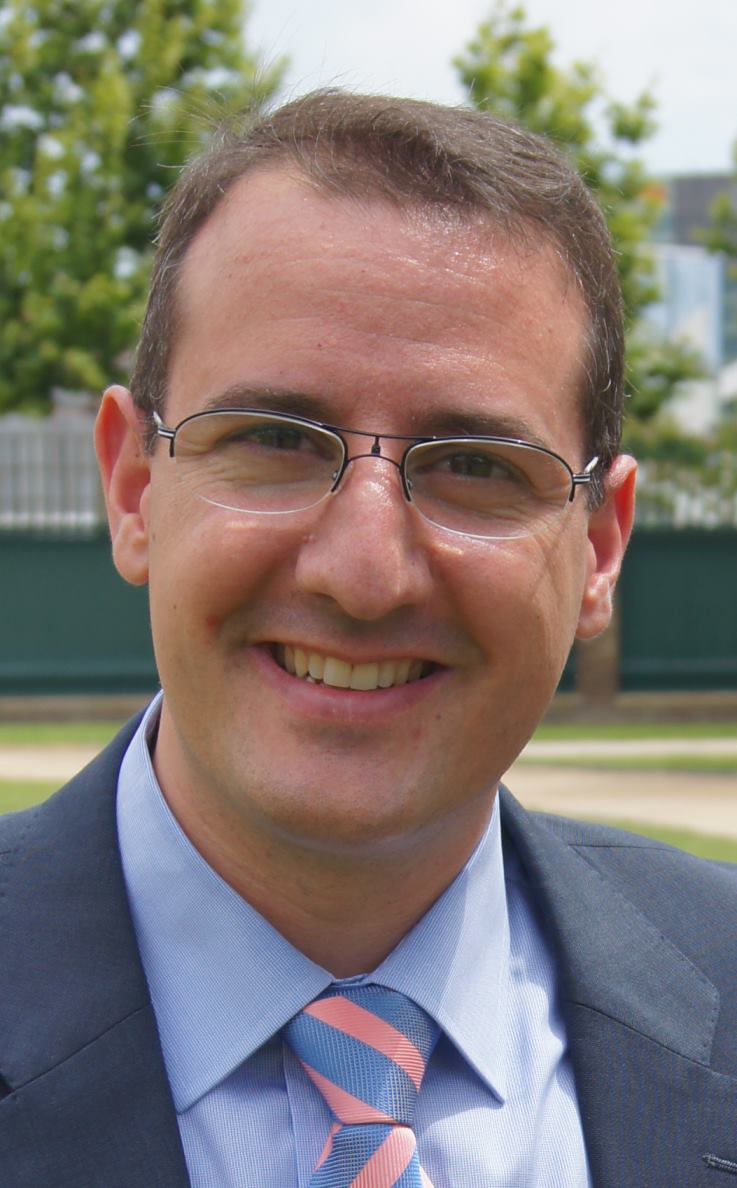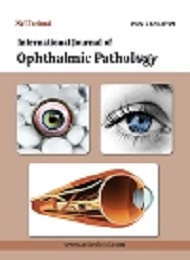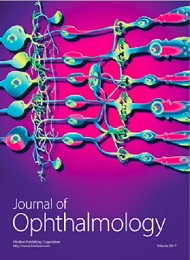Theme: Live a Great Life, with a Great Vision
GLOBAL OPHTHALMOLOGY 2023
Dear Future Researchers, Physicians, Industrialists, and Students, Become a part of the 9th Global Ophthalmology Meeting. Improve your abilities; discover your academic role models. Take part in heated discussions and hone your arguments. Increase your knowledge and expand your horizons, enjoy yourself while travelling to a new location!
Globally, 1.3 billion people have some form of visual impairment. Uncorrected refractive errors, cataract, age-related macular degeneration, glaucoma, diabetic retinopathy, corneal opacity, and trachoma are the main causes of vision loss. 80% of these causalities, according to the World Health Organization, are easily preventable. Nearly one in six people on the planet need to pay quick attention to this desperate problem. On May 31–June 1, 2023, in Rome, Italy, Conference series LLC Ltd will host the highly esteemed 9th Global Ophthalmology Meeting and Optometry. The seminar provides a thorough explanation of the topic "Recent Innovations in Ophthalmology for the Treatment of Organ of Sight Diseases."
A very important topic of research is 9th Global Ophthalmology Meeting. Exploring current trends & future developments in ophthalmology will serve as the focus of this year's meeting, which will take place from May 31–June 1, 2023, and will offer a global forum for discussion of current and upcoming difficulties in the treatment of various diseases by ophthalmologists.
This explains why different regions of the world have conducted research. researchers who study various ophthalmology illnesses from the perspective of the eye. The gathering welcomes the most distinguished speakers. Highlights of this event include the most recent information on eye problems, operations, preventative measures, etc., as well as the most anticipated redesigns in the ophthalmology sector.
Aim and Scope:
Clinical and experimental investigation of eye disorders and treatments are the main objectives of the global ophthalmology 2023 related diverse diseases. With the conversations on various diseases, Global Ophthalmology 2023 makes the most of the chance to communicate with and learn from peers from around the world.
A follow-up to open access publications and world-wide international science conference events is the Global Ophthalmology 2023 Conference. It provides a stage for its participants to discuss their research findings in front of internationally famous professors, doctors, and doctors. It will be an excellent platform for young scholars to investigate, discover, and work together. Scientific conferences held by Conference Series are known for their well-arranged scientific sessions, plenary lectures, poster presentations, world-class exhibitions, varied symposiums, highly educational seminars, and B2B meetings.
Target audience:
- Clinical researchers & Doctors
- Public Health Professional
- Ophthalmic surgeons
- Retina and Retinal Surgery
- Glaucoma
- Optometrists
- Medical Practitioners, Professors, Deans, Students & Technicians
- Medical & Health care Organizations & Associations
Participation Benefits:
- Attend Keynote Presentation by globe’s most eminent researchers
- Access to all the sessions
- Get OCM certificate
- Get globe wide acknowledgment to your profile and Research
- Get your abstracts published with unique DOI in International Journals
- Get up to 50% discounts for publishing your entire article in our open access International Journals
- Get Handbooks and conference kits
- Get an access to the network with eminent personalities from globe wide
Track 1: Ophthalmology
The eye and visual system are the focus of ophthalmology, a field of medicine. Ophthalmology encompasses the entire visual system, including the internal and exterior components such the eyeball, eyelid, lashes, and tear glands. Treatment options range from providing care for the external organs of sight to treating various conditions relating to those organs of sight using medical, surgical, and rehabilitation techniques. The elimination of blindness is being worked on by numerous specialists, including ophthalmologists, optometrists, and vision specialists. It is crucial for clinicians and researchers to get together and talk about the various ways to integrate research into clinical practise if we are to have a world without blind people. Research can also be used to address some diagnosis-related issues with new solutions. Ophthalmology conferences are being conducted to bring the researchers and clinicians together and have a beneficial discussion and make the globe blind free.
Track 2: Perception and Visual Cognition
It depends on the process that uses neuroimmunomodulation, electropalatography, organ of sight growth, psychophysics, and extra ciphering modelling. Visual search, spatial vision, perceptual association, semantic processing and categorization, face recognition, visual disregard, visual agnosia, perception for action, visual working memory, restraint and psychological control, reading, and social vision.
Track 3: Paediatric Ophthalmology
A subspecialty of ophthalmology called paediatric ophthalmology treats children with vision problems and visual impairment. Doctors that specialise in paediatric ophthalmology work to strengthen the visual system and address the various problems that prevent children from developing their vision. Paediatric ophthalmologists are skilled at treating a variety of child-related eye infections.
Track 4: Infant vision
The development of your children's vision begins before birth. From the moment your kid is born, her eyes will aid in her physical, intellectual, and emotional development by enabling her to learn - a little at first and ultimately significantly more - about her broad surroundings. A baby's visual layout provides some room for imagination. Babies are unable to notice many details throughout the first week of life. Their initial view of the world is vague and only contains black tones.
Track 5: Clinical Ophthalmology
Clinical Ophthalmology is the stream which deals with medical and ophthalmic surgical techniques, Retinal Diseases, Ocular Diseases and laser procedures.
Track 6: Retinal care
The Retina is a thin layer of tissue that lines the back of the organ of sight at the back. It is found near the optic nerve. The main aim of the retina is to catch light that the lens has focused, convert the light into neural signals, and send these signals on the brain for visual identification.
Track 7: Scrutiny of Visual Sensory System
Despite advances in electroencephalogram imaging and other techniques, examination of the afferent visual sensory system is still the core of the neuro-ophthalmologic examination. A thorough refraction is an essential part of all clinical neuro ophthalmologic examinations. Conflict visual fields should be part of every afferent system examination. The relationship between the physical properties of light and perceptual and behavioural responses is known as visual psychophysics, which serves as the foundation for the clinical assessment of visual function. The resolution of patient’s optical field improves worsens, or remains stable over time is the most difficult aspect of visual field interpretation. Many attempts have been made to investigate visual field function using evoked potentials to visual stimuli.
Track 8: Organ of sight Health
Our Organ of sights is an important part of your Health. Everyone rely on their organ of sights to see and make perception of the globe around them. Myopia and blindness have direct effect on individual, families, and communities. These effects range from a decrease in quality of life and increased mortality to large-scale economic outcome. Primary organ of sight care is a wide concept, circumscribe the prevention of potentially deprive of sight organ of sight diseases through primary health care (PHC). You might think your vision is fine or that your organs of sights are wholesome, really be sure.
Track 9: Ocular and Neurologic Evaluation
Imperfect evaluation of patients during regime scrutiny and the failure to correlate manifestations are probably more common reasons for missed neuro-ophthalmic determine than the potential delicacy of neuro-ophthalmic symptoms. Recommendations for incorporating a more thorough, efficient organ of sight examination in routine practice are included in the Examination efficiency. There are several reasons of decreased vision following a neurological event (such as acquired brain injury). It is important to direct the cause of the decreased vision as it will allow the physician to discuss prediction and potential for improvement.
Track 10: Cosmetic /Aesthetic Ophthalmology
Initial training in Ophthalmology brings in all the concepts of micro-incisions, fine suturing and working under microscopes. This comes as a lead of Cosmetic abscission in Ophthalmology. Furthermore since majority of maturity occur around the organ of sights, an ophthalmic plastic medico can better address these issues through hidden slit behind the organ of sight lid. The main aim of beautifying ophthalmology is to decrease the signs of ageing and ameliorate countenance features through both surgical and non-surgical techniques, wrinkles, drooping organ of sight lids, darkness under the organ of sights and loose bloated skin as well as unwanted hair and veins can be treated successfully.
Track 11: Optometry and Vision science
Vision science is the scientific study of vision. Vision science surround all studies of vision, such as how human and non-human organisms process visual information, how conscious visual perception works in humans, how to exploit visual perception for productive communication, and how artificial systems can do the same tasks. Optometry is a healthcare occupation that is sovereign, educated, and regulated (licensed/registered), and optometric physician are the primary healthcare exponent of the organ of sight and visual system who provide comprehensive organ of sight and vision care, which includes refraction and distribute, detection/diagnosis and administration of disease in the organ of sight, and the recuperation of conditions of the visual system.
Track 12: Vision Science and Technology of Ophthalmology
Vision Science is the technological study of vision. The visual framework is very pleasant made to transmit data of the outside globe to visual assemble and subjective focuses in the intellect. The presumption of apprehension is the cerebrum’s capacity to synchronize all the electrical movement it is continually accepting and producing. The necessary goal of visual neuroscience is to perceive how neural activity brings about visual acknowledgment, and furthermore hones dependent on vision.
Track 13: Neuroscience of Visual Impairment
Only one second is needed for our brain to process what we are viewing. The so-called ventral-temporal cortex, often known as the visual brain, is the area of our brain that is capable of organising these visual findings so swiftly. It has been discovered that blind persons also use the visual brain's map. Each group is recognised differently by their visual brain. This implies that despite not having any visual information, blind persons also use this portion of the brain to distinguish between categories.
Track 14: Recent Researches in Vision Science and Ophthalmology
Organ of Sight and Vision Researchers are rising from the lab and the clinic to educate the public, patients, and policymakers about the sight-saving work we undertake and the advantages it offers to our society in a world that is changing quickly. The aim is to provide opportunities for Ophthalmology teachers and students to develop their research presentation skills to academic audiences. The objective of Ophthalmic Researchers and Scholars is still to conduct innovative study on the evolution, composition, and operation of the visual system and to maintain our status as a centre of excellence. Research efforts have resulted in clinical studies to prevent, treat, and cure eye illnesses thanks to this project.
Track 15: Glaucoma Surgery
One of two main outcomes is intended by every glaucoma surgery technique, laser or non-laser: either a reduction in the formation of intraocular fluid (aqueous humour) or an increase in the outflow (drainage) of this fluid. If alternative therapies fail to control your glaucoma, surgery may be your last resort. Surgery is not typically the initial step in treating glaucoma. The intraocular pressure can be decreased surgically by using a laser or by cutting an incision in the eye.
Types of laser surgery for glaucoma:
- Argon laser trabeculoplasty (ALT):
- Selective laser trabeculoplasty (SLT)
- Laser peripheral iridotomy (LPI)
- Cyclophotocoagulation
Track 16: Refractive Surgery
Any surgical technique used to treat vision issues is referred to as vision correction surgery, also known as refractive and laser organ of sight surgery. Huge improvements have been made in this field recently. More individuals can see clearly than ever before because to laser and refractive eye surgery. The clear front portion of the eye, the cornea, is reshaped by the majority of vision correction surgeries. That permits light to pass through it and properly focus on the retina, the rear of your eye.
- LASIK -or laser in-situ keratomileusis, works for people who are near sighted, farsighted, or have astigmatism.
- Photorefractive keratectomy-is used to correct mild to moderate near-sightedness, farsightedness, or astigmatism.
- Refractive lens exchange. Other names clear lens exchange (CLE) - It’s the same as cataract surgery. A small cut at the edge of your cornea. She removes your natural lens and replaces it with a plastic lens implant. The procedure can correct extreme farsightedness or near-sightedness.
- PRELEX -Short for presbyopia lens exchange is a procedure used for presbyopia, or loss of flexibility in your organ of sight. The doctor removes your lens and replaces it with a multifocal lens.
Track 17: Diagnostic Instruments in Optometry
In ophthalmology, diagnosis is the major important part for deciding the treatment for the patients. Only through the proper instrumentation technique, this is achieved. The posterior part of the organ of sight consists of vitreous humour, retina, choroid, and optic nerve. These are viewed using the proper Instruments. Mostly for retinal analysis, optical coherence tomography (OCT) is used. OCT is an imaging technique used for viewing the organ of sight in Two- and Three- Dimensions and for capturing the micrometre resolutions. This is the most important and emerging technologies in the diagnosis because of its easy prediction, Non-invasive technique, less strain and time consumption technique. There are many instruments specially designed for the detection of the organ of sight problems and for the rectification.
Track 18: Vitreous and Ophthalmic Epidemiology
Lazy Organ of sight, also known as amblyopia, occurs when one organ of sight develops poorly. Vision is weak in that organ of sight and it moves slowly. Using corrective glasses or contact lenses may correct it. It may occur in infants, children and adults. Dry organ of sights is condition when there is a chronic lack of sufficient lubrication and moisture on the surface of the organ of sight. Consequences of dry organ of sights range from subtle but constant organ of sight irritation to significant inflammation and even scarring of the front surface of the organ of sight. Symptoms of dry organ of sight includes: Burning sensation, itchy organ of sights, photophobia, ache, blurred vision.
Track 19: Ophthalmic Case Studies and Novel Approach
In a small randomized controlled trial, production of aqueous tears and secretion of goblet cells increased following application of the Occleve Intranasal Lacrimal Neurostimulator (Allergan).This handheld device works by delivering electrical stimulation to the anterior ethmoidal branch of the trigeminal nerve in the nasal cavities. It potentially offers a new mechanism for treating dry organ of sight disease—now largely managed with artificial tears and anti-inflammatory agents.
Track 20: Effect of Digital Screens on Organ of sight
Digital screens give off little or no harmful radiation (such as x-rays or UV rays). All levels of radiation from computer screens are below levels that can cause organ of sight damage such as cataracts. Digital screens do exposure your organ of sights to blue light
Track 21: Ayurvedic Treatment and Exercise in Ophthalmology
Compared to the hearing, the sense of sight provides more accurate testimony. Although this may not entirely be true, you cannot stop the significance from seizing your vision. Unfortunately, your eyes are susceptible to a variety of disorders that can lead to vision loss or degradation of visual perception, just like every other organ in your body. The thought of complete vision loss can seem terrifying or startling to those of us who have good or even poor vision. This is the reason organ of sight exercises and herbs that improve vision have become so popular recently. To get best Result from Ayurvedic Therapy in Ophthalmology there are some Exercise that we can follow, because our organ of sights have muscles and they can get sore when held in one position for too long, just like any other muscle of the body. Give your organ of sight muscles a break and you will be very grateful over the years. By doing even a few of these exercises you may well increase our productivity, eliminate headaches and errors, and even reduce your risk of glaucoma. And you don’t even have to take time off for these exercises so a busy schedule should be no excuse.
- Triphala
- Ginkgo Bilbao
- Fennel Seeds & Almonds
- Rose Water
- Palming
- Blinking
- Zooming
- Shifting
- Figure of eight
Track 22: Latest and Innovative Organ of sight Research
Organ of sight surgery, generally called visual surgery, can't avoid being surgery performed on the organ of sight or its adnexa, typically by an ophthalmologist. The organ of sight is a sensitive organ, and requires astounding thought some time as of late, in the midst of, and after a surgical procedure. An authority organ of sight master is responsible for choosing the fitting surgical framework for the patient, and for taking the imperative security wellbeing measures. Ophthalmic surgeries can be of different sorts who incorporate Laser organ of sight surgery, waterfall surgery, glaucoma surgery, refractive surgery, corneal surgery, vireos-retinal surgery et cetera.
Anaesthesia is essential since the eye is closely related to the nervous system. The most popular type of anaesthesia is neighbourhood. Rapid procedures frequently include topical anaesthesia using lidocaine topical gels. General anaesthesia is occasionally utilised for children, horrific organ of sight wounds, and severe orbitotomies for suspect people because topical anaesthesia demands the patient's interest. The anaesthesia professional monitors the patient's cardiovascular condition. In order to prepare the area for operation and reduce the risk of contamination, clean security procedures are conducted. These safety precautions are added to the usage of sterile window coverings, clothing, gloves, and cleaning agents like Providence-Iodine.
Track 23: Corona Virus Effect on Organ of Sight
Based on data so far, doctors believe that 1%-3% of people with COVID-19 will get conjunctivitis, also called pink organ of sight. It happens when the virus infects a tissue called conjunctiva, which covers the white part of your organ of sight or the inside of your organ of sight lids. Symptoms include if your organ of sights are: Red.
Pink organ of sight (conjunctivitis) can be a symptom of COVID-19. Research suggests that the most common organ of sight problems linked to COVID-19 is light sensitivity, sore organ of sights and itchy organ of sights
Track 24: Cornea Diseases and Treatments
Disease of the visual system that may lead to eventual total blindness. As a result, research into corneal disease is done to help treat it, and methods like contact lenses and vision correction are also employed to treat difficulties associated to eyesight, in addition to surgical procedures like corneal transplantation to replace the cornea. The retina, the light-sensitive tissue at the rear of the organ of sight, is illuminated by working the cornea and focal point of the eye. Light is refracted or bent as it approaches the focal point at the point where it strikes the cornea. The retina is where light is first translated into vision by the focal point, which refocuses that light. The retina changes over light into electrical driving forces that go through the optic nerve to the mind, which translates them as pictures.
Track 25: Congenital cataracts
A congenital cataract is a clouding of the organ of sight's natural lens that is present at birth. Depending on the density and location of the pacification, congenital cataracts may need to be removed by cataract surgery while the child is still an infant to enable normal vision development and prevent amblyopia and even blindness. Congenital cataracts can occur in new-born babies for many reasons, including inherited tendencies, infection, metabolic problems, diabetes, trauma, and inflammation or drug reactions
Different types of congenital cataracts:
- Anterior polar cataracts
- Posterior polar cataracts
- Nuclear cataracts
- Cerulean cataracts
Global market research of ophthalmology
The global ophthalmology market experienced a decline during the 2008 and 2009 financial crisis, but it is now poised to grow steadily, largely as a result of an ageing population, a sizable patient population with diseases affecting the organ of sight, shifting demographic and geographic trends, and a greater emphasis on drug combination therapies. Additionally, glaucoma and cataract cases are rising annually.
48% of people develop total blindness as a result of cataracts. Additionally, glaucoma affects more than 60 million individuals worldwide and is predicted to affect 80 million people by the year 2020. More individuals with refractive defects are being caused by an ageing population. It is estimated that in the U.S. and Europe, refractive errors affect more than 30% of the population aged 40 or older. However, the economic slowdown and drying pipeline of ophthalmology drugs is restricting the market.
Scope of the Report
The global market for ophthalmology pharmaceuticals and devices is divided into four categories in the research report: drugs, surgical devices, diagnostic devices, and vision care. These markets are all segmented and sub-segmented, with thorough value analyses for 2010, 2011, and 2012 and projections through 2017. To give thorough insight into the overall situation, each device market is meticulously examined at a regional level (North America, Europe, Asia, and the Rest of the World). The drug market is examined in the United States, Europe, Japan, Asia, and the rest of the world.Read More
Conference Highlights
- Ophthalmology
- Perception and Visual Cognition
- Paediatric Ophthalmology
- Infant vision
- Clinical Ophthalmology
- Retinal care
- Scrutiny of Visual Sensory System
- Organ of sight Health
- Ocular and Neurologic Evaluation
- Cosmetic /Aesthetic Ophthalmology
- Optometry and Vision science
- Vision Science and Technology of Ophthalmology
- Neuroscience of Visual Impairment
- Recent Researches in Vision Science and Ophthalmology
- Glaucoma Surgery
- Refractive Surgery
- Diagnostic Instruments in Optometry
- Vitreous and Ophthalmic Epidemiology
- Ophthalmic Case Studies and Novel Approach
- Effect of Digital Screens on Organ of sight
- Ayurvedic Treatment and Exercise in Ophthalmology
- Latest and Innovative Organ of sight Research
- Corona Virus Effect on ORGAN OF SIGHT
- Cornea Diseases and Treatments
- Congenital cataracts
To share your views and research, please click here to register for the Conference.
To Collaborate Scientific Professionals around the World
| Conference Date | May 31-01, 2023 | ||
| Sponsors & Exhibitors |
|
||
| Speaker Opportunity Closed | |||
| Poster Opportunity Closed | Click Here to View | ||
Useful Links
Special Issues
All accepted abstracts will be published in respective Our International Journals.
- Immunological Techniques & Infectious Diseases
- Clinical Immunology and Allergy
- Journal of Vaccines & Clinical Trials
Abstracts will be provided with Digital Object Identifier by












